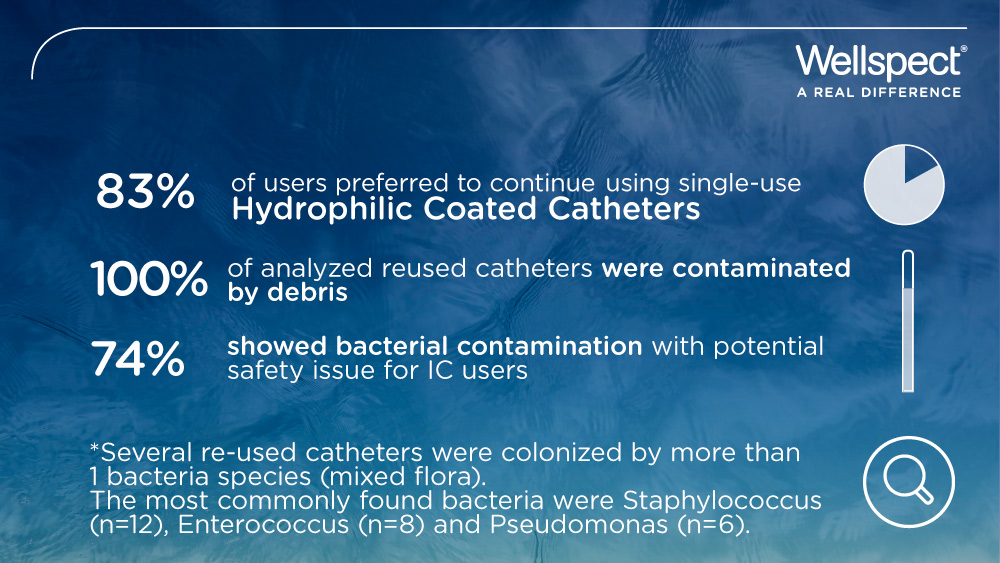Newly published data shows that multiple-reuse catheters pose a potential safety concern for people practicing intermittent catheterization

There is an ongoing debate and lack of clinical evidence regarding the safety of multiple-reuse of catheters when compared with single-use catheterization. This study provides clinical evidence about multiple-reuse versus single-use catheterization techniques and if catheter choice can have an impact on health-related quality of life (HRQoL).
This clinical trial investigated 39 patients who currently practiced catheter reuse and who agreed to prospectively evaluate single-use hydrophilic-coated (i.e. LoFric Origo™ or LoFric ® Sense ™, Wellspect HealthCare) catheters for 4 weeks. The reused catheters were collected for laboratory analysis. A validated Intermittent Self-Catheterization Questionnaire (ISC-Q) was used to obtain HRQoL.
Laboratory analyses revealed that all collected reused catheters (100%) were contaminated by debris and 74% were contaminated by bacteria. In fact, viable microorganisms could be cultured in 67% of the samples. Surprisingly, occurrence of biofilm (cluster of bacteria and slime) was found in every fifth re-used catheter, something that normally only occur in indwelling catheters. No microorganism contamination was seen in single-use HC catheters, as expected.
The mean ISC-Q score increased when patients switched to the single-use HC catheters and represents a 16% increase in HRQoL. At the end of the study, 83% preferred to continue using single-use HC catheters.
The data from the current study show that catheter multiple-reuse poses a potential safety concern for people practicing IC. There is a lack of standardized cleaning procedures with a great variability in how long each catheter is reused (ranging between 1 to 270 days). The cleaning procedure itself seems to leave marks on the catheter with chemical contamination of residues from detergents and soap. This has the potential to impact the surface structure of the catheter and the urethral mucosa. The high level of contamination of re-used catheters is a safety issue and may increase the risk of UTI through microbial colonization and has an impact on adherence/acceptance of IC.




